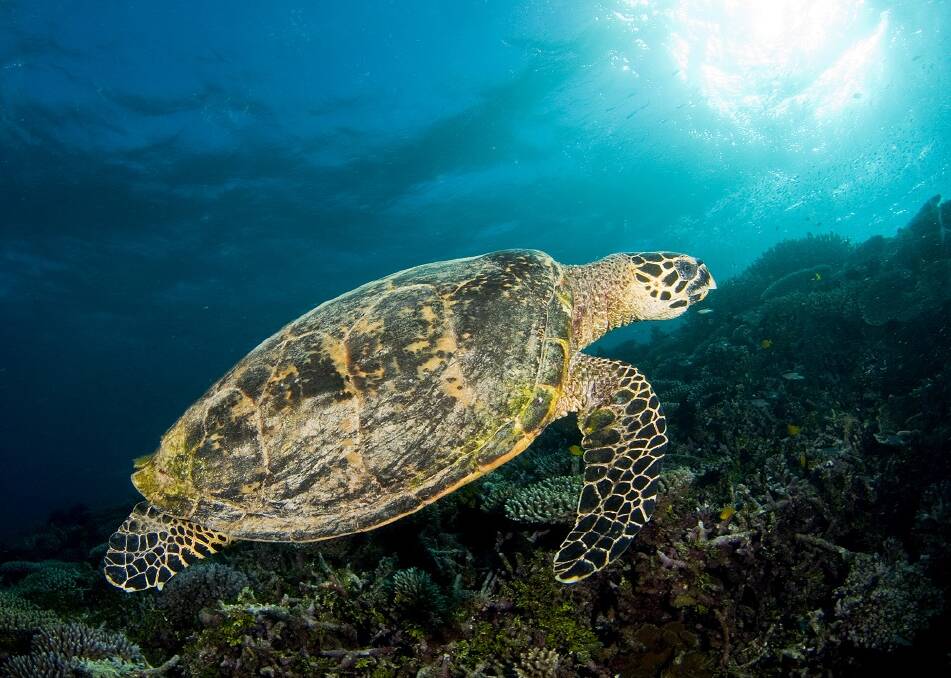WATCH as ghost nets are removed from the Gulf of Carpentaria.
Every year, lost or abandoned fishing gear drifts into the Gulf of Carpentaria in northern Australia.
The nets, which can be more than six kilometres long and weigh over ten tonnes, travel great distances with the tides and ocean currents.
A dangerous menace for turtles, dolphins, sharks, seals, and other fish, ghost nets are a death trap for endangered animals which swim into the nets and then become entangled, lacerated, or strangled by them.

The nets are also a major contributor to the global crisis of ocean plastics, taking hundreds of years to break down.
But a new, federally-funded program is setting out to protect northern Australia’s unique marine habitats and wildlife.
So far under the program, 195 ghost nets have been removed from the Gulf of Carpentaria, along with over 50,000 kg of marine debris.
Part of a broader $14.8 million package, the ghost net program includes a variety of projects in the Northern Territory including specialised aerial surveys using drone technology to monitor ghost net locations as well as net detection using satellite imagery together with artificial intelligence to enhance predictive capabilities.
A custom-designed vessel for the removal of ghost nets within the Groote Archipelago will support the efforts, which also include a trial of new beach clean-up equipment to facilitate the removal of large amounts of waste from beaches in Arnhem Land and the use of new technology to granulate marine debris to make it easier to transport and recycle.
Minister for the Environment and Water, Tanya Plibersek, said abandoned fishing gear has been killing marine animals on an industrial scale.
“Sea creatures swim into these discarded nets and then find it impossible to escape,” she said.
“Turtles, dolphins, seals and sharks are all dying in these cruel underwater traps.
“Unfortunately, the removal of ghost nets and marine debris can be challenging, due to their size, remote location and strong tides.
“And the plastics found in ghost nets continue to degrade. These plastics can remain in the marine environment for hundreds of years.
“I want to see a plastic-free Pacific in our lifetimes.”
Ms Plibersek said the new program would help rid northern oceans of ghost nets to “protect our magnificent marine life for generations to come”.
Member for Lingiari, Marion Scrymgour, said the coastline of northern Australia had one of the highest global densities of ghost net pollution.
“Up to 15,000 ghost nets have been reported in the Gulf of Carpentaria in the last ten years,” she said.
“This is why our investment is so important – we want to get these nets out of our waters to prevent damage to our reefs and marine life.
“Our Sea Country is so important for our communities along the Northern Coast – and I am very excited to see the work that will come from these grants.”

I am an award-winning media and communications professional with experience across print, digital, social and radio broadcast, as well as photography and videography.
I am the NT Correspondent at Australian Community Media and I write for my hometown newspaper, the Katherine Times. I love telling people’s stories, and I am passionate about giving those a voice who may otherwise remain unheard.
When I am not busy putting pen to paper, I spend time in my garden, go bushwalking or travel across the Northern Territory, Australia or the world.
In my spare time I write, illustrate and publish books.
I am an award-winning media and communications professional with experience across print, digital, social and radio broadcast, as well as photography and videography.
I am the NT Correspondent at Australian Community Media and I write for my hometown newspaper, the Katherine Times. I love telling people’s stories, and I am passionate about giving those a voice who may otherwise remain unheard.
When I am not busy putting pen to paper, I spend time in my garden, go bushwalking or travel across the Northern Territory, Australia or the world.
In my spare time I write, illustrate and publish books.
